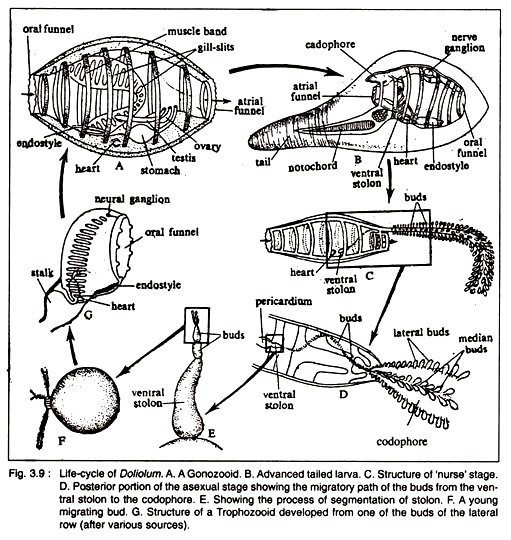In this article we will discuss about bacteriophage and its properties.
The virus which infects and destroys the bacterial cell is known as bacteriophage or eater of bacterium (Greek phagein — to eat). Though they are so called, but they do not eat bacteria. They infect and destroy the bacterial cells only. They are commonly known as phages. The phages were discovered by Edward Twort in 1915, and Twort d’Herelle in 1917 studied them in detail.
Almost all the bacteria are infected by one or more viruses. Morphologically, the phages (Fig. 2.42) vary from very simple small structure having single stranded DNA (φ x 174) to a complex tadpole like structure having double stranded DNA, the T-even phages (T2, T4) (Table 2.13).
The phage which infects the colon bacterium (E. coli) is called Coliphage. They are mostly T-even phages like T2, T4 etc. The viruses also infect and parasitise on blue green algae, fungi, yeasts and actinomycetes, and, accordingly they are called as Cyanophages, Mycophages, Zymophages and Actinophages, respectively.
Important properties of some bacteriophages are:
Ultrastructure of Bacteriophage:
The detailed morphological structures of bacteriophages are known with the help of electron microscopic studies of some larger particles of T-even types which infect the bacterium E. coli.
The structures of T-even phages are given below (Fig. 2.43):
T-even phages are spermatozoid or tadpole-like structure with a head and a tail. The head is a hexagonal, bipyramidal prismoid structure, while the tail is contractile and cylindrical. The tail is attached to the lower side of the head. The extended portion between the head and tail is called disc or collar. The head of T2 phage is approximately 950 Å x 650 Å in size.
The wall of the head is a proteinaceous membrane, consists of 2,000 similar protein subunits, enclosing a single, double-stranded DNA thread of about 50 nm in length. The molecular weight of DNA is 2,500,000 and the amount of nucleic acid is approximately 6 x 103 micrograms. The length of the tail is almost equal to the length of the head i.e., 950 Å and its diameter is 80 Å.
The tail consist of four parts (Fig. 2.43):
(i) A central hollow tube or core (through which DNA passes during infection),
(ii) The proteinaceous sheath surrounding the core can contract longitudinally,
(iii) Hexagonal tail plate or basal plate (200 A thick), has a pin at every corner which is attached with the distal end of the sheath,
(iv) Six long thin tail fibres are attached to the tail plate, one at each corner. The tail fibres are about 1,500 Å in length. The tail fibres are the organ of attachment to the host cell wall.


